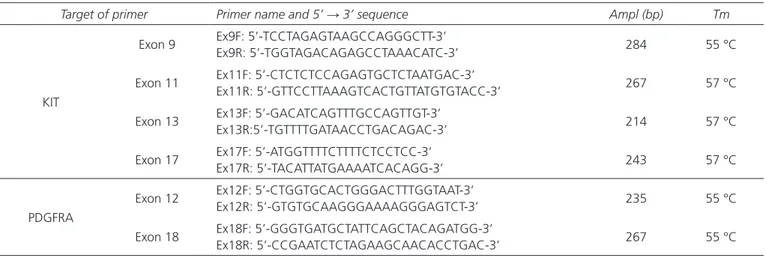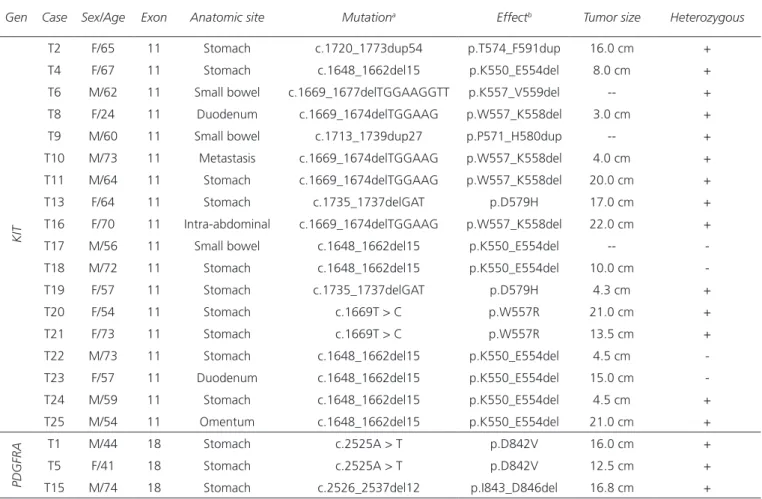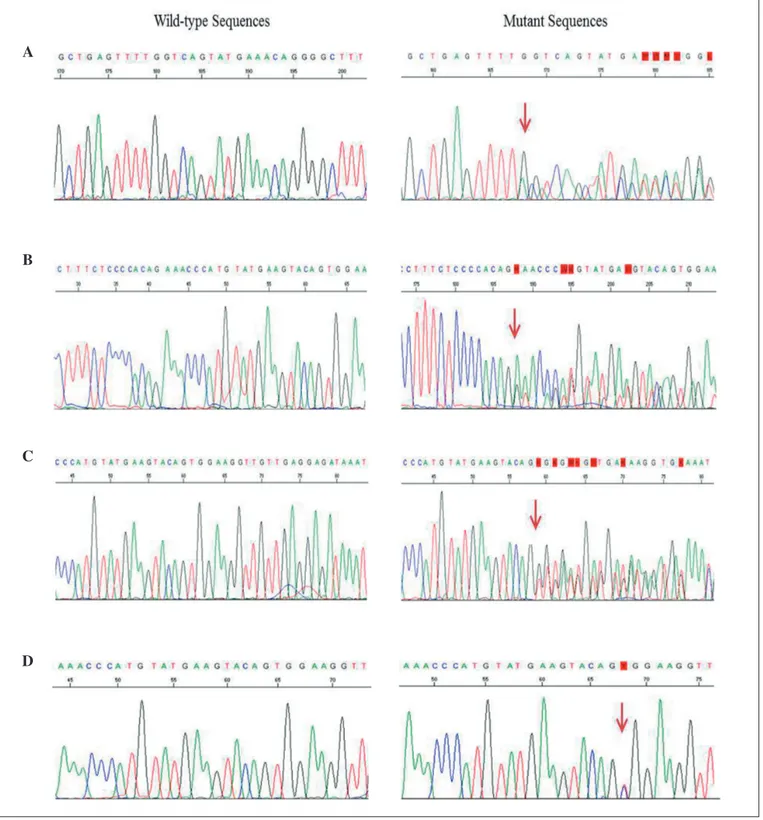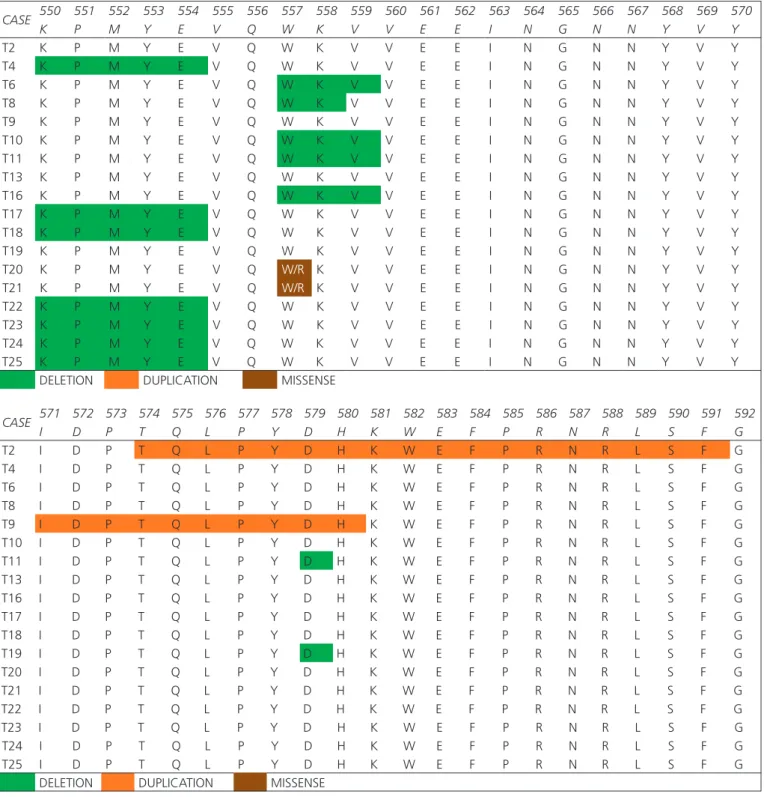Mutational profile of KIT and PDGFRA genes in gastrointestinal stromal tumors in Peruvian samples
Texto completo
Figure




Documento similar
When comparing the distribution of our mutations with the mutations from the PHEX mutation database [18], a lower mutation density was observed in the first and second part of the
It is well known that chromosomal inversions in natural populations of the species Drosophila subobscura are adaptations to changes in the environment.. It has been observed
The Dwellers in the Garden of Allah 109... The Dwellers in the Garden of Allah
It is crucial for the academic success of students with migration background that schools offer courses in their native language It is important for the academic success of
It is possible that the treatment time that we employed (8 weeks) is not sufficient for producing the visible alterations corresponding to fluorosis, in leukocytes as well
The expansionary monetary policy measures have had a negative impact on net interest margins both via the reduction in interest rates and –less powerfully- the flattening of the
Jointly estimate this entry game with several outcome equations (fees/rates, credit limits) for bank accounts, credit cards and lines of credit. Use simulation methods to
In our sample, 2890 deals were issued by less reputable underwriters (i.e. a weighted syndication underwriting reputation share below the share of the 7 th largest underwriter